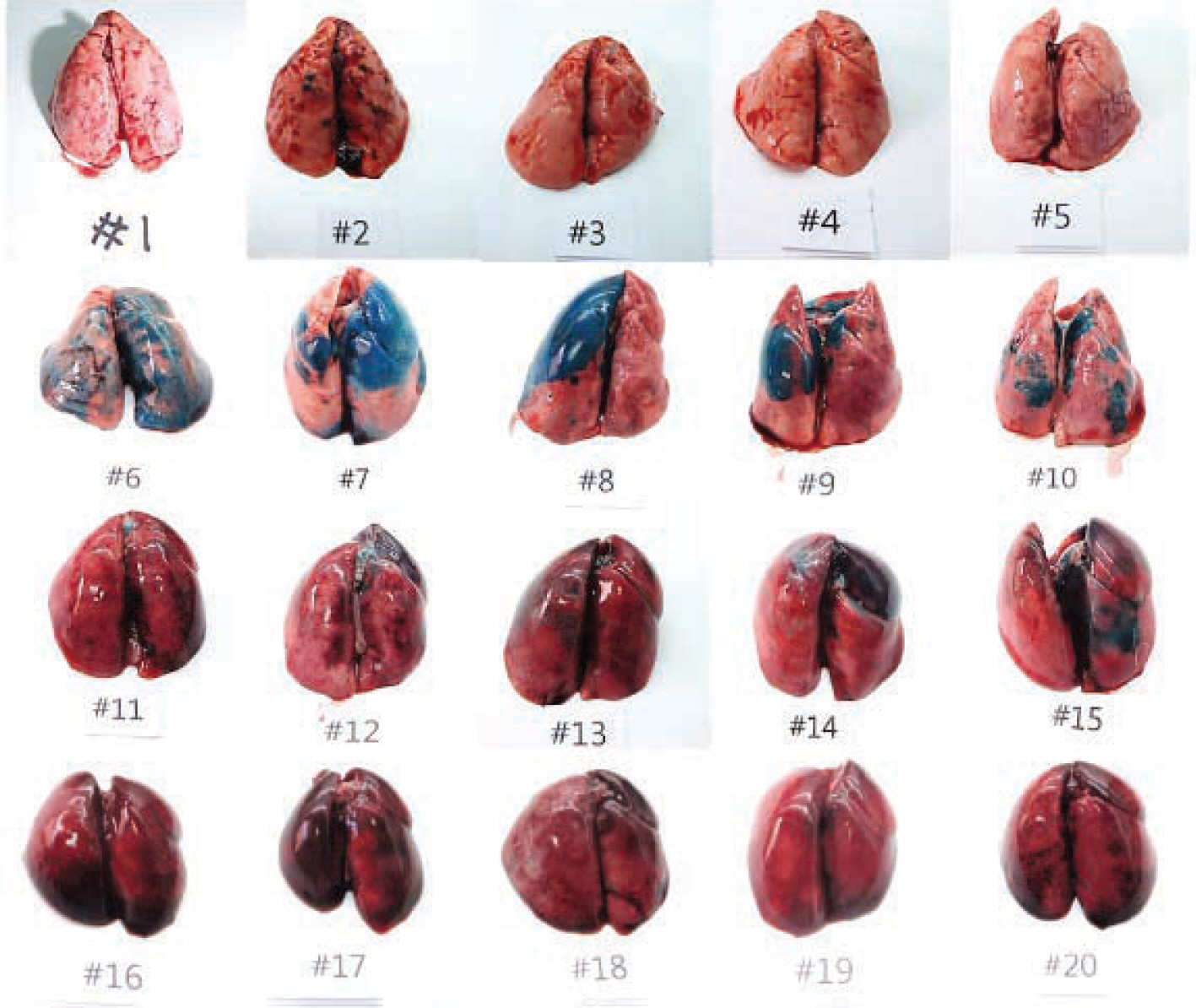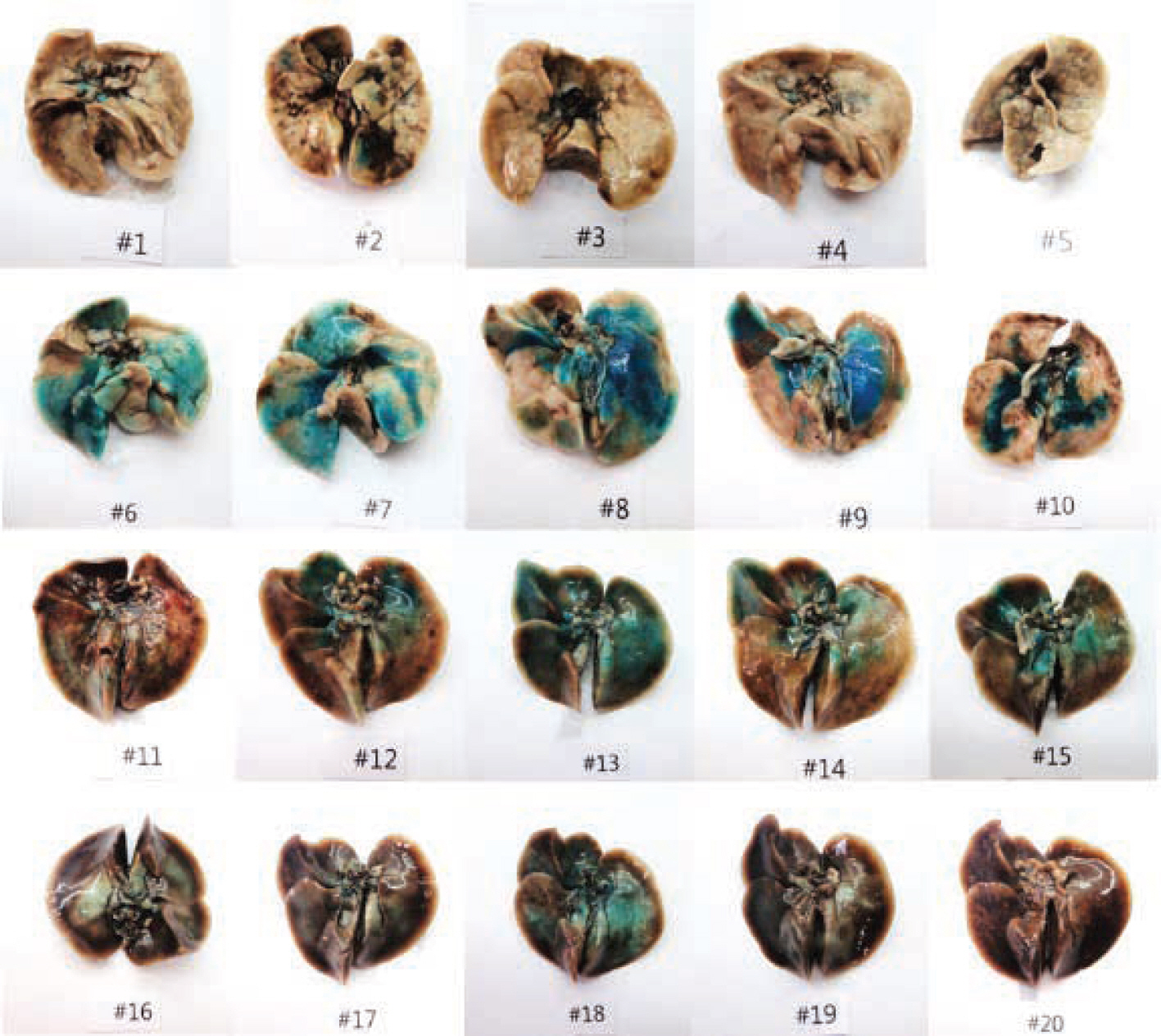Korean J Leg Med.
2014 Feb;38(1):19-25. 10.7580/kjlm.2014.38.1.19.
Animal Experiment for the Analysis of Postmortem Inhalation Degree by Drowning Medium Containing Methylene Blue
- Affiliations
-
- 1Department of Forensic Medicine, Chosun University School of Medicine, Gwangju, Korea. ysk007@hotmail.com
- 2Department of Forensic Medicine Investigation, Seoul Institute of Scientific Investigation, Seoul, Korea.
- KMID: 2305460
- DOI: http://doi.org/10.7580/kjlm.2014.38.1.19
Abstract
- Drowning is a leading cause of accidental deaths worldwide, but its pathological diagnosis remains a challenge for forensic pathologists owing to a lack of pathognomonic findings in drowning deaths and inconclusive autopsy findings caused by postmortem changes. The aim of the present study was to investigate the pathway taken by inhaled drowning medium through the airway after death in a variety of experimental conditions, including underwater pressurization. We used methylene blue dye to monitor the spread of drowning medium to the lungs. Results of theses experiments demonstrated that it is possible for a significant amount of downing medium to enter the airway during immersion after death. Our results suggest that autopsies of immersed bodies and interpretation of these findings should be performed with special care.
Keyword
MeSH Terms
Figure
Reference
-
1. Layon AJ, Modell JH. Drowning: Update 2009. Anesthesiology. 2009; 110:1390–401.2. Na JY, Park JP, Choi MS, et al. The statistical analysis of legal autopsies in 2011. Korean J Leg Med. 2012; 36:165–73.3. Ludes B, Quantin S, Coste M, et al. Application of a simple enzymatic digestion method for diatom detection in the diagnosis of drowning in putrified corpses by diatom analysis. Int J Legal Med. 1994; 107:37–41.
Article4. Fornes P, Pe ′pin G, Heudes D, et al. Diagnosis of drowning by combined computer-assisted histomorphometry of lungs with blood strontium determination. J Forensic Sci. 1998; 43:772–6.
Article5. Piette MH, De Letter EA. Drowning: still a difficult autopsy diagnosis. Forensic Sci Int. 2006; 163:1–9.
Article6. Lunetta P, Modell JH, Sajantila A. What is the incidence and significance of “dry-lungs” in bodies found in water? Am J Forensic Med Pathol. 2004; 25:291–301.
Article7. Hong JW, Lim SC, Kim YS. Comparison of pathologic findings by seawater or freshwater drowning on the experimental animals. Korean J Leg Med. 2013; 37:119–28.
- Full Text Links
- Actions
-
Cited
- CITED
-
- Close
- Share
- Similar articles
-
- Evaluation of Sodium and Chloride Biochemical Tests in Drowning Autopsy Cases
- Effects of methylene blue or evan's blue on mouse embryo development, human sperm motility, serum E2 level and components of human intra tubal fluid
- Comparison of Pathologic Findings by Seawater or Fresh Water Drowning on the Experimental Animals
- High-dose Vitamin C therapy in Methemoglobinemia
- Hysteroscopic Septotomy of a Complete Septate Uterus Using a Balloon with Methylene Blue






